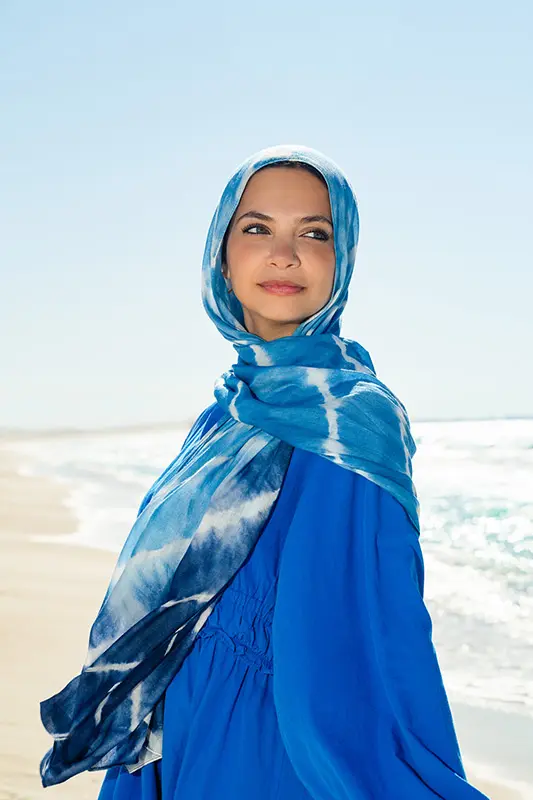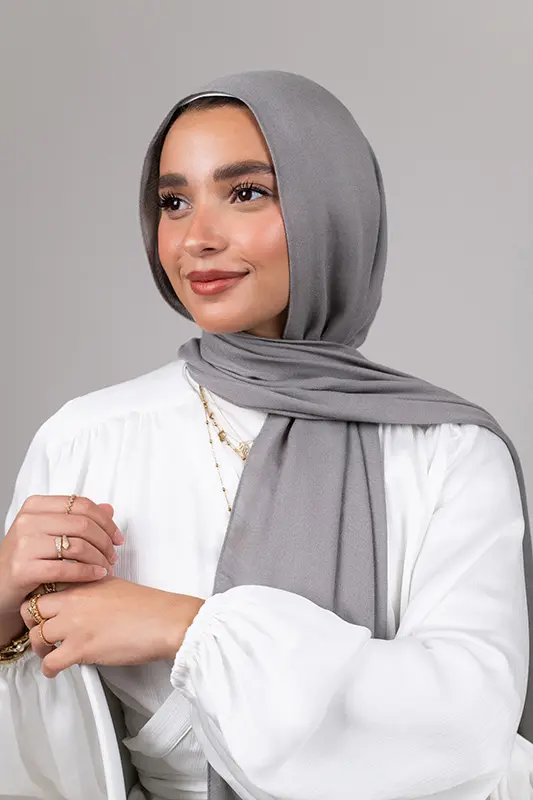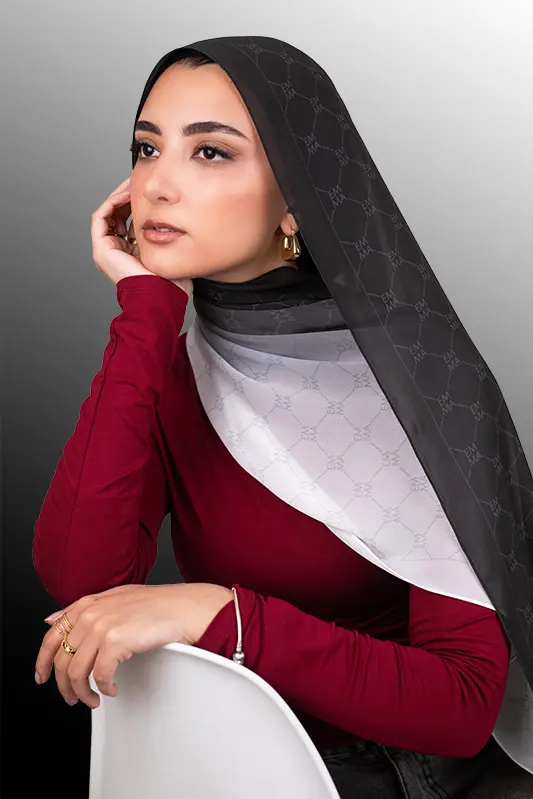Hijab Articles
Hijab vs. Balaclava: A Comprehensive Review of the Two Headcovers
When it comes to head covers, the hijab and the balaclava might seem similar at first glance—they both cover the head and neck.
However, they serve very different purposes and hold unique cultural and functional significance.
Whether you’re curious about their differences for practical reasons or cultural understanding, this article breaks down hijab vs. balaclava and what sets these two head coverings apart.
What Is Hijab?

The hijab is a traditional headscarf worn by many Muslim women as a part of their religious and cultural identity. The word “hijab” comes from the Arabic word for “barrier.” In a broad sense, it’s meant to serve as a barrier between a woman’s beauty and unwelcome eyes. It symbolizes modesty and privacy.
The hijab covers a woman’s hair, neck, and chest, leaving the face clear. This practice of covering is a personal expression of faith, adhering to the Quranic instruction for modesty in dress and behavior.
However, it’s essential to understand that the hijab’s significance goes beyond its physical form. It represents a woman’s commitment to her beliefs and submission to Allah.
There are various styles and ways to wear a hijab, reflecting different cultural backgrounds and personal preferences. Some women prefer a simple, single-colored scarf draped loosely, while others might opt for different shapes like turbans or niqabs that cover the face. It depends on each country and its practices.
Despite being mandatory in Islamic rulings, it’s important to recognize that not all Muslim women wear the hijab, as the choice to do so is highly personal and influenced by a multitude of factors, including cultural norms and family traditions.
Why Do People Wear the Hijab?

At its core, wearing the hijab is an act of faith and devotion. It’s basically an adherence to the principles of modesty outlined in the Quran, which encourages Muslim women to dress modestly and behave with humility.
For some, the hijab serves as a constant reminder of their commitment to their religious beliefs. It’s a way to stay connected to their faith. By wearing the hijab, they feel closer to Allah and more aligned with the rulings of Islam.
Cultural heritage and family traditions also play a significant role in the choice to wear the hijab. In many Muslim-majority countries and communities, the hijab is a common and accepted practice, passed down through generations. It can be a way for women to honor their family’s customs and preserve their cultural identity.
What Is Balaclava?

A balaclava, also known as a ski mask or balaclava helmet, is a form of headgear designed to cover most of the head and face, leaving only the eyes, and sometimes the mouth, exposed.
Named after the Battle of Balaklava during the Crimean War, where British troops wore similar gear to protect themselves from harsh weather, the balaclava has evolved to serve various functions in modern times.
Typically made from materials like wool, fleece, or synthetic fibers, balaclavas are renowned for their warmth and protection against extreme weather conditions.
They’re commonly worn by skiers, snowboarders, mountaineers, and cyclists who face cold and windy environments. The snug fit and insulating properties of a balaclava help retain body heat, keeping the wearer comfortable in freezing temperatures.
In addition to outdoor sports, balaclavas are also used in various professional settings. Military personnel and law enforcement officers may wear them for camouflage and protection in hostile environments.
On top of that, firefighters sometimes use flame-resistant balaclavas as part of their protective gear. Moreover, construction workers and motorcyclists might wear balaclavas to shield their faces from dust, debris, and wind.
Aside from practical uses, balaclavas are sometimes incorporated into streetwear and avant-garde fashion designs, making bold statements with their distinctive appearance.
Who Do People Wear a Balaclava?

People wear balaclavas for a variety of practical and situational reasons, with their design and functionality serving multiple purposes across different contexts.
One of the primary reasons for wearing a balaclava is protection against extreme weather conditions.
In cold climates, a balaclava is invaluable for outdoor activities. It provides coverage for the head, face, and neck, which are particularly vulnerable to frostbite and windburn.
Balaclavas are also essential in certain professional settings, particularly in low enforcement, because they can conceal the identity of the wearer, providing anonymity and security during operations.
In addition to these uses, balaclavas are sometimes worn for motorsports and paintball, offering both protection and a sense of identity within the sport.
Recommended: Check our comprehensive Awra Hijabs review
Hijab vs. Balaclava: The Main Differences

Here are the main differences between the hijab and the balaclava:
Purpose
The hijab is primarily a symbol of faith and modesty for Muslim women. It reflects religious and cultural beliefs and is often worn as an expression of faith and submission to Allah.
Meanwhile, the balaclava is designed for practical purposes, offering protection against extreme weather conditions and environmental hazards. It’s used in various professional, recreational, and fashion contexts.
Design and Coverage
The hijab covers a woman’s hair, neck, and chest, leaving the face visible. It comes in various styles and fabrics, and it can be wrapped in various ways, depending on each wearer’s taste.
The balaclava typically covers the entire head, face, and neck, leaving only the eyes exposed. It’s designed for maximum coverage and insulation.
Cultural and Religious Context
Worn primarily by Muslim women, the hijab has deep religious and cultural roots. It’s associated with Islamic values, and its significance varies among different communities and countries.
The balaclava has no specific religious or cultural connotations. It’s a functional garment used across different cultures and professions, from outdoor sports to military operations.
Materials and Functionality
Hijabs are usually made from lightweight fabrics like cotton, silk, or chiffon, prioritizing comfort and style. They’re often chosen to match outfits and personal preferences.
Balaclavas are typically made from insulating materials like wool, fleece, or synthetic fibers, designed to retain heat and provide protection in harsh conditions.
Usage
The hijab should be worn in front of all non-mahram men, which means it’s a staple of every woman’s outfit and a part of everyday life. However, Muslim women can appear without it in front of fellow women or mahram men, so it can be taken off in certain settings.
The balaclava is worn in specific situations that require protection from the elements or concealment, such as skiing, mountaineering, motorcycling, or certain professional activities.
Final Thoughts
The hijab and the balaclava, while visually similar, are worlds apart in their purpose and significance.
The hijab is a symbol of faith and identity for many Muslim women, reflecting cultural and religious roots. The balaclava, on the other hand, is a versatile piece of gear designed for protection and functionality in different settings and outdoor activities.

Read More
A Better Version Of Myself
6th year in my hijab. Hijab builds me, it protects me. Flash back, 6 years ago… I was afraid of [...]
6 Comments
Oct
Nesma Khedr’s Hijab Story
❤ الحمد لله الذى بنعمته تتم الصالحات …. قلعته بعد ١٦ سنه حجاب و لبسته تانى بعد ٨ شهور [...]
35 Comments
Sep
Greater Than All
As these very special 10 days of Dhul Hijja unfold, I’m intrigued to explore more of their hidden gifts sent [...]
11 Comments
Aug